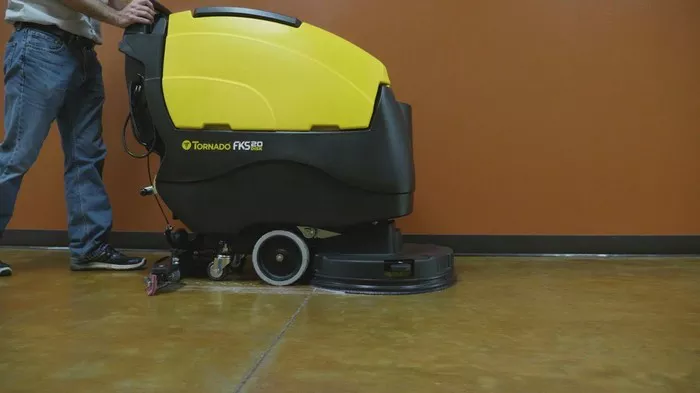Maintaining a clean and pristine floor not only enhances the aesthetics of a space but also contributes to a healthier environment. Whether you’re tackling a small household floor or a large commercial space, the process of scrubbing floors efficiently and effectively involves several key steps. From preparation to selecting the right equipment and cleaning solutions, here’s a detailed guide to ensure you achieve the best results while safeguarding your floors and the environment.
Preparation
Before diving into the scrubbing process, it’s crucial to prepare the area adequately. Clear the floor of any obstacles or furniture to provide a clear surface for cleaning. This not only facilitates the cleaning process but also prevents any potential damage to furniture or obstacles.
Choose the Right Equipment
Selecting the appropriate scrubbing equipment is paramount to achieving optimal results. The choice of equipment depends on factors such as the type of floor you’re cleaning and any specific cleaning instructions provided by the manufacturer. Options include mops, scrub brushes, floor scrubbers, or steam cleaners. Consider the material of your floor—whether it’s tile, hardwood, laminate, or another type—and choose equipment that is suitable for its maintenance.
Select the Correct Cleaning Solution
Using the right cleaning solution is essential for preserving the integrity of your floors. Avoid harsh chemicals that could damage the flooring material over time. Instead, opt for a cleaning solution that is specifically formulated for your floor type. In many cases, a mixture of water and mild detergent proves effective for general floor cleaning. However, for specialized floors such as hardwood or stone, ensure you use a solution recommended by the manufacturer.
Test in an Inconspicuous Area
Before applying any cleaning solution to the entire floor, it’s wise to conduct a patch test in an inconspicuous area. This allows you to assess the compatibility of the cleaning solution with your floor without risking damage or discoloration to the visible areas. Once you’ve confirmed its suitability, proceed with confidence.
Follow Proper Technique
Mastering the proper scrubbing technique is key to achieving thorough and consistent results. Work in small sections to ensure every part of the floor receives attention. Utilize a back-and-forth motion while applying even pressure to dislodge dirt and stains effectively. For stubborn stains, allow the cleaning solution to dwell for a few minutes before scrubbing to loosen the grime.
Rinse and Dry
After thoroughly scrubbing the floor, it’s crucial to rinse away any residual cleaning solution to prevent streaking or residue buildup. Use clean water to rinse the floor, ensuring all traces of the cleaning solution are removed. Once rinsed, dry the floor completely using a clean, dry cloth or mop. Adequate drying is essential to prevent water damage and restore the floor’s natural shine.
Consider Using a Floor Finish
For added protection and enhanced appearance, consider applying a floor finish after scrubbing. Floor finishes provide an extra layer of protection against stains, scratches, and wear and tear. However, ensure the chosen finish is compatible with your floor type, and follow the manufacturer’s instructions for application.
Maintain Regular Cleaning Schedule
Consistency is key to keeping your floors in optimal condition. Establish a regular cleaning schedule based on factors such as foot traffic and the type of flooring material. High-traffic areas may require more frequent cleaning to prevent dirt buildup and maintain a polished appearance. By adhering to a routine cleaning schedule, you can prolong the life of your floors and preserve their beauty for years to come.
Safety Precautions
When handling cleaning chemicals, prioritize safety at all times. Wear appropriate protective gear, including gloves and goggles, to shield yourself from potential hazards. Additionally, ensure the cleaning area is well-ventilated to minimize exposure to fumes and airborne particles. By prioritizing safety, you can safeguard both yourself and the integrity of your floors.
Environmental Considerations
In an era of increasing environmental awareness, it’s important to consider the ecological impact of your cleaning practices. Whenever possible, opt for environmentally friendly cleaning products that are biodegradable and non-toxic. By choosing sustainable cleaning solutions, you can minimize harm to the environment while maintaining a clean and healthy space.
Conclusion
In conclusion, achieving optimal floor scrubbing involves a combination of thorough preparation, careful selection of equipment and cleaning solutions, adherence to proper techniques, and commitment to safety and environmental responsibility. By following these guidelines, you can ensure your floors remain pristine, prolong their lifespan, and contribute to a healthier living or working environment.


